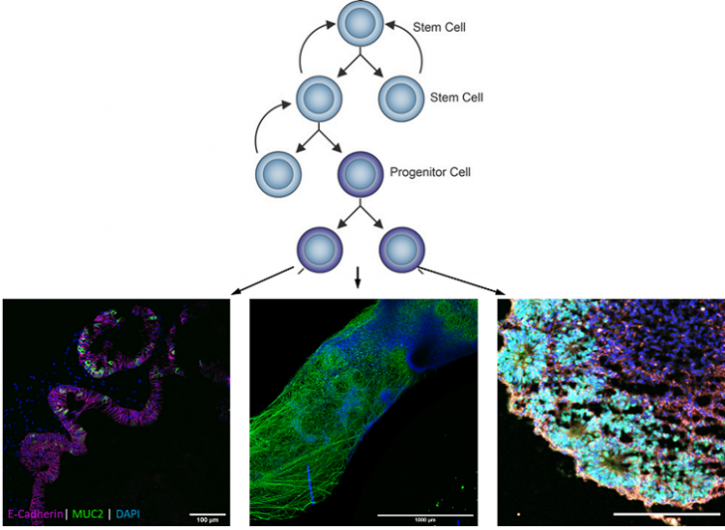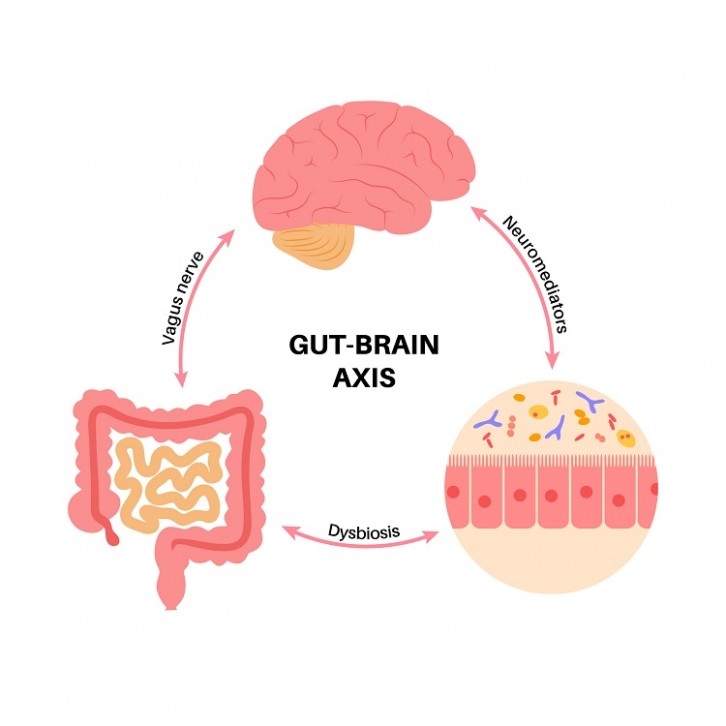The existence of the gut-brain axis is well accepted in the scientific community and the food industry. The ability to recreate that axis on a chip-scale device, however, sounds almost like science fiction. Dr Kerensa Broersen, associate professor of applied stem cell technologies at the University of Twente and senior project manager at NIZO, explains that it is not only possible but already being used to explore the relationship between food and brain health. What’s more, it could soon help accelerate the development of new food products that promote mental wellbeing.
René Floris: What is the gut-brain axis and what role does food play in it?
Kerensa Broersen: In school, we learn that the brain controls the rest of the body. But in recent decades, scientists have learnt that, in the case of the gut, that influence goes both ways. What happens in the gut can alter brain activity, leading to changes in our mood and emotions, sleep patterns, appetite, cognition, motor function and even brain health and neurodegeneration. Specifically, we know that, as part of their metabolism, certain microorganisms in the gut produce molecules such as short-chain fatty acids, conjugated bile acids, immunomodulatory peptides and neurotransmitters. These metabolites can modulate brain activity by regulating vagus nerve activity, by affecting intestinal and brain immune cells and by being transported in the blood to the brain.
We call this bi-directional communication the gut-brain axis. The messages relayed through it are intimately related to gut microbiota metabolism, and thus food and diet play a key role in the gut-brain axis. We know that food can help modulate brain health and activity. However, because the gut microbiome is so diverse and because people vary greatly in both their gut microbiome composition and genetic make-up, it isn’t yet clear exactly how. Most studies of how food affects the gut-brain axis have, so far, been based on large cohorts or animals testing, and animals are often very poor models for human physiology. Hence, many of the fundamental questions on food and gut-brain communication remain unanswered. Which foods or ingredients affect which microorganisms to produce which effect in the brain? Via which mechanism? Does the effect depend solely on the dose or do the food matrix and processing also play a role?
Answering such questions would drive huge innovation in the food industry, improving efficiency in product development and providing better substantiation for the health benefits of foods. We are currently exploring the ability to find those answers through model systems that mimic the human gut-brain axis – what we refer to as a “gut-brain axis on a chip”.
RF: Is it really possible to create a gut-brain axis on a chip?
KB: Absolutely! In fact, the technology to do so is quite well established. We start with adult stem cells, which can be collected from blood, urine etc. By carefully controlling how these stem cells develop, we can create miniature versions (or organoids) of specific organs in the human body. To mimic the gut-brain axis, we create separate organoids of the intestinal epithelium and the brain plus neurons to represent a vagus nerve. We place these onto a specially designed coin-sized microfluidic device, add a mucus layer and specific gut bacteria to the epithelium and we have a functional mimic of the human gut-brain axis.

At the University of Twente, we use the model gut-brain axis on a chip to explore the relationship between specific molecules in the intestine and the response in the brain and vice versa. NIZO brings expertise in nutrition and intestinal microbe metabolism – as well as a range of digestion and gut fermentation models. This blend of pure and applied science offers a unique opportunity to explore the whole nutrition-brain system: from the food that enters your stomach, the microbes and metabolites in your intestine to the activity in your brain. Imagine, for example, studying the role of infant formula in paediatric brain development.
RF: How could this help the food industry?
KB: Today’s consumers are more aware of the role of diet in their wellbeing – and not just in meeting nutritional requirements. The industry has seen a huge demand for pro- and prebiotic products, and some manufacturers have already started marketing products targeting mental wellbeing, for example by improving sleep and mood.
Of course, any suggestion that a food or ingredient benefits health or wellbeing needs evidence to back it up. Until now, the options for gathering that evidence were limited to clinical studies and in vitro models based on two-dimensional cell lines. In vitro cell line models are relatively quick and cheap, but only really give insight as far as what is happening in the gut with no certainty how that will influence brain activity or development. Clinical studies give a fuller picture, but are expensive, require careful design and interpretation and are subject to large statistical variation due to differing genetic and environmental conditions. The gut-brain axis on a chip models offer a complement to these approaches, allowing you to see the specific effect that a given food has on the brain.
RF: What are the advantages of this approach?
KB: The gut-brain axis model could become a valuable tool in the industry’s toolbox for finding new foods and ingredients that impact brain health and to understand their mechanisms of action. It would sit alongside cell line models and clinical studies. The gut-brain axis on a chip also offers greater predictive power than animal testing as it involves actual human tissue. And because the models only include the relevant organs for examining the gut-brain axis, they make it possible to really focus on the effect of the food being studied.
Of course, clinical studies would remain the gold standard for verifying specific health claims to meet regulatory demands, but the gut-brain axis model could certainly provide evidence to support claims in a more “storytelling” style for marketing purposes. They could also help in screening candidate foods for taking on to clinical studies and provide valuable insight to improve the design of those studies.
What’s more, the models can be easily parallelized, allowing foods to be studied in a systematic way that delivers better statistics. This, in turn, would provide much better understanding of the workings of a specific food or ingredient, helping product developers to make educated decisions that reduce time to market and allow products to be tailored to particular populations.
RF: What is the future for this technique?
KB: So far, gut-brain axis models have mainly been developed and used in academic institutes. But it has incredible potential for the food industry. For example, because it is easy to test how the effect of a food varies across different populations: males vs. females, children vs. adults vs. seniors, healthy individuals vs. people with specific conditions.
What’s more, the stem cells can be developed into many types of human organ. So, it is possible to extend the models in any way you want. We could, for example, mimic blood flow and the blood-brain barrier to create a more complete version of the gut-brain axis including the bloodstream modulation channel. Or you could add in liver, heart, kidneys. In fact, it is technically possible to recreate the whole human body in miniature form on the chip. That could be the gateway to a whole new domain of truly personalised nutrition.
